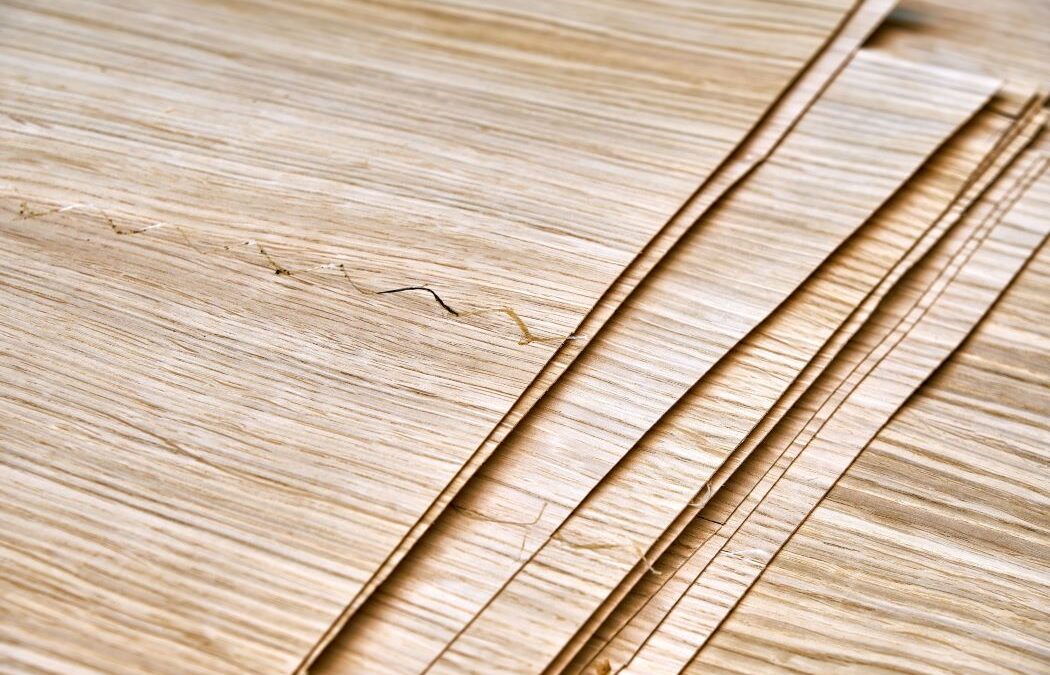What is veneer and how is it created?
Veneer is the natural beauty hidden within the trunk of a tree. It is a very thin sheet of wood with unusual patterns, which is produced from long straight tree trunks. Modern technology can cut sheets of wood as thin as a piece of paper.
The history of veneer actually begins with the idea of conservation, since it is a technique known since ancient times. African ebony veneers with ivory inlays and other precious and exotic materials were used to decorate pharaonic objects in Egypt 3000 years ago. Some of the finest royal furniture for hundreds of years contains rich veneer construction, using the finest types of wood.
But let’s make things clear. The word “kaplamas” is Turkish (kaplama) and means covering. Veneer is created by cutting thin slices from a whole tree trunk to make thin sheets of wood. These wood veneers are used to cover surfaces of furniture, cabinets, doors and other modern items to provide an attractive and durable finish. By using them in furniture, a high quality product is achieved, but at a lower cost than that of solid wood.
Once the trees are felled, the timber before production is protected from insects, fungi and other harmful degradation agents, especially sensitive and valuable wood species. The logs are then soaked in water, steamed or sprayed to soften and facilitate the processing of cutting or debarking, but also to improve their quality. They are then driven to special veneer manufacturing machines. There are several ways to cut these sheets listed below.
There are three main methods:
-
Rotary cut veneer
-
Rift Cut and Quarter Sliced
-
Plain sliced cut
Rotary cut veneer involves rotating the log on a long blade or knife, similar to unrolling a roll of kitchen paper. It is the most common method, which offers a large amount of leaves. This process produces continuous sheets of veneer with a consistent “water” pattern of wood. The debarked wood sheets are then dried, flattened and cut to the desired sizes. Not all types of trees can be debarked with this method, such as e.g. the soft woods.
Rift cut and quarter sliced is used exclusively for the production of decorative sheets. First, prisms (wood slabs) are cut from the trunk of the tree, which are then prepared in water or steam. They are then attached to the cutting machine and then the wood sheets are cut by horizontal or vertical reciprocating motion of the wood or blade.
Plain sliced cut (splitting) involves cutting the trunk into vertical slices, the thickness of which starts from about 1 millimeter. These wood sheets are then dried and flattened to create uniform and stable veneer sheets. This method is more rare because the veneers produced are of excellent quality intended for special uses such as musical instruments, good quality pianos, etc.
After cutting, the veneer sheets must be joined (stitched) in a special machine together to create larger surfaces. The matching of the “waters” of the wood is what gives the wonderful appearance and this is where the mastery and aesthetics can be seen. There are several ways to match and each gives different results to the appearance of the waters.
Book match: The most common technique. Think of consecutive sheets of veneer that open across from each other like the pages of a book. So we have a mirror image of it.
Slip match: Successive sheets of veneer slide over each other and join side by side, like sliding a deck of cards. In this way, a repeating pattern of wood grain is created.
End match: Two consecutive cards match like a book and the next two are turned over. So we have a final match of four pieces. We find it in lids from old dining tables.
Reverse slip match: Veneer sheets slide over each other and each veneer sheet is flipped edge to edge. This “breaks” the repetitive pattern.
Random match: The pattern or color of the waters is not taken into account.
Special match: Certain types and cuts of veneer are often matched to highlight the character and patterns of the wood in a particularly creative way to produce a wide variety of unique decorative designs. Box fit, diamond, herringbone and parquet are just a few of the many types that are often used.
Veneers are applied over other wood derivatives. In this way, the cost and consumption of expensive solid wood is reduced. So veneered products are more economical than solid wood. After the veneer sheets are prepared, they are placed on a substrate using special adhesives for welding. These substrates are usually made of medium density fiberboard (MDF), particle board, plywood or inferior solid wood panels. The veneer is then pressed and applied to the substrate under high pressure to ensure a strong and durable bond. The panels resulting from this process can be used by wood industries for the manufacture of furniture, wall coverings, other utilitarian and decorative objects (marquetry, musical instruments, chess, etc.). They can then be further processed, sanded and finished with pigments or varnishes to improve their appearance and protect their surface.
Wood is a living organism that offers us beauty, durability and functionality.
The WOORD company can create for you kitchen furniture, bedroom wardrobes, bathroom furniture, special constructions, doors, furniture compositions, wall coverings, etc. Contact us for a personal appointment to discuss your needs.
SOURCE:
- Science & Technology of Wood – Volume II, Industrial Utilization, Georgios Tsoumis, Gartagani Publications
- Wood Technology, Ioannis Kakaras, ION Publications
- Magazine WOOD – FURNITURE

